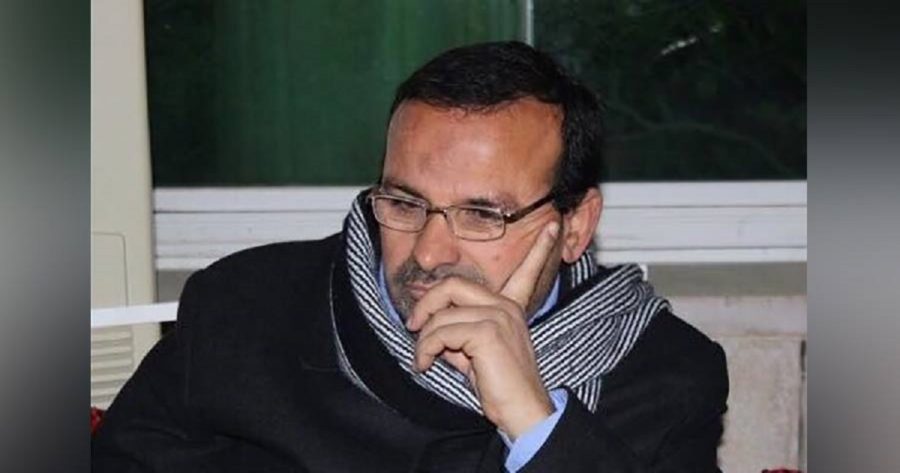
Before delving into Tajideen’s prominence on the international level, the controversy around Jomblatt’s concerns over the role of the Tajideen family must be mentioned. The president of the Progressive Socialist Party Walid Jomblatt feared that the Tajideen family is attempting to implement an expansion project, across several Lebanese villages, on behalf of Hezbollah through purchasing land across the South and Mount Lebanon.
In 2007, Jumblatt accused the family of these suspicious activities as they started knocking on the doors of Chouf (Jomblatt’s political stronghold). It was later on alleged within Hezbollah circles that these accusations were utilized to justify the inclusion of the Tajideen family in the Terror List; according to Hezbollah adjacent newspaper “Al-Akhbar”. However, that is not the full story.
The focal point of this case was Ali Tajideen, a key player in the company “Jihad Al-Binaa” that undertook the reconstruction of the South of Lebanon in after the war of 2006. Researcher Matthiew Levitt said that the Tajideen brothers used another company to purchase lands on the behalf of Hezbollah. Levvit referenced a book titled “Warriors for God”, a 2011 book by British Journalist Nick Blanford, that stated that Ali Tajideen purchased lands between Jezzine and the Beqaa valley. There it was being said that: “Hezbollah is building Shiite communities for the goal of connecting eastern and western Shiite territories.”
Blanford wrote that “Jihad Al-Binaa” had transformed a rough and pothole-ridden route, between Jezzine and the Beqaa valley, into a shining brand new freeway. He added: “I started hearing stories about vast tracts of land being bought by Tajideen in the small Druze town of Srayreh. One of the residents told me that Tajideen was paying between $2-$4/m2 of land; often accepting the initial asking price and paying fully in cash.”
Similarly, the New York Times newspaper revealed in 2011 that Hezbollah worked on similar projects; one of which included what is probably “The single most expensive deal in the history of Lebanon”. That deal comprised of the purchase of $240m worth of acres of land overlooking the Mediterranean in the region of Chouf. The real estate referenced by the New York Times was a 3.5 million square meter piece of land which was bought by a member of the Tajideen family from millionaire businessman Robert Mouawad. This land, which has an excellent strategic location, is part to the town of “Al-Dalhamiyya” which falls under the jurisdiction of “Al-Dibbiyeh”.
Moreover, sources concerned and knowledgeable with Hezbollah’s movement across the Southern Lebanese coast told Janoubia back in 2016 that: “Hezbollah has been working for years to gain control over the coastal highway between Beirut and the south of Lebanon. They are doing so through the acquisition of apartments and properties in Khaldeh, Nahme, and Jadra. That in addition to the construction of the “Moustafa compound” (Hezbollah’s largest building complex along the Lebanese coast) in Jiyeh, a residential complex in Saadiyat, and “Al-Bahhar” project in “Wadi Al-Zeine” which is another large complex located at the entrance of the predominantly Sunni region of “Al-Kharroub”.
In fact, there were many more acquisition plans reported in the media. These included the residential “Medyar” project, and other projects that extended all the way to the Litani River near the presence of the United Nations emergency forces’ “UNIFIL”.
All of these concerns that began back in 2007, as we mentioned earlier, did not deter Attorney Shibley Mallat from taking up the case of Kassim Tajideen in 2009, or from arranging a meeting between his client with Walid Jomblatt which held in the latter’s residence in Al-Mukhtara.
Mallat spoke in an interview published back in 2016 with “The Guardian” saying that: “Jumblatt was skeptical at first, and we went over a lot of maps. We met several times, but we became friendly and we developed a good relationship.”
Mallat revealed that: “In 2011, Jomblatt wrote the Office of Foreign Assets Control (OFAC) saying he had investigated the case and concluded that Tajideen has nothing to do with Hezbollah.” However, he explained that: “Maybe it was a different piece of land that Levitt was referring to. It is unclear. The property in question that I discussed with Walid had nothing to do with Jezzine.”
This has been part 4 of the complete story of Kassim Tajideen.

